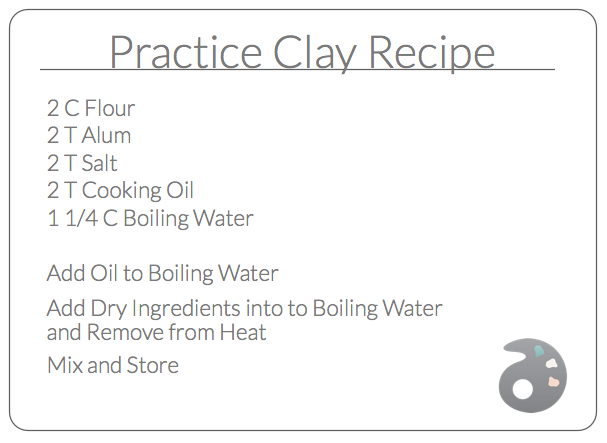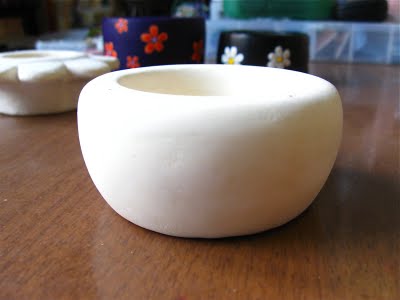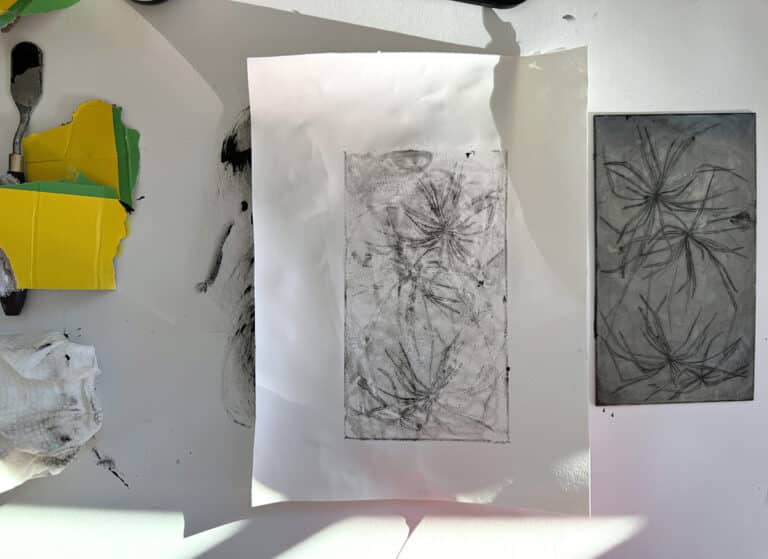In “Teaching Clay Without a Kiln: An Art Teacher’s Resource” I talked about alternatives to traditional clay materials for the art room. All of these suggestions were products you can purchase in the store. Today I want to talk about DIY or Homemade alternatives for traditional clay, which can hopefully stretch your dollar even farther, although it might take a bit more effort on your part.
First, my favorite recipe for practice clay (basically play dough if you want to be technical with it). I am a huge fan of allowing students to practice before they get their hands on the actual clay project. Because students only get to work with clay once a year, it’s not fair to assume they have all the skills and only give them one shot at a final product. That being said, I don’t like using my earthenware clay for practice because it dries out easily and then I end up spending countless hours re-hydrating the clay and kneading it back to health. To this, my hands say ‘ouch’!

You will want to store this in an airtight container so it doesn’t dry out. It should last you several weeks to a month, but as with any consumable product, it won’t last forever. Hopefully your batch will get you thought practice clay season and you can always whip up another one when needed. You can also add food coloring to make it more fun and colorful, however, the natural color is similar to the color of clay, which is an nice precursor to the clay experiences for kids. I also like to knead this as I mix it, just like bread dough. It makes for a nice smooth consistency. This recipe is meant to work more like play-dough for practicing with clay or perhaps at your free-choice station. It’s not meant for a final product your students can take home. It will not harden when dry like an air dry clay would.
Other fun DIY Clay Recipes
Baking Soda Clay
Here is another homemade clay that claims to be smooth to the texture, easily sanded down once dried, and will air dry in 2 days. Please visit this blog for the complete tutorial. The list of supplies seem like they would be inexpensive. This is appealing to me because it doesn’t require baking.

Oven Baking Clay
There are many DIY oven baking clay options out there. Most art teachers avoid this option because the logistics can get tricky. How will I bake projects for hundreds of students and where will I do it? If you teach at a smaller school or spread out your clay curriculum at different times of the year, one of these options might work for you. This recipe for Oven Baking Clay seems pretty straightforward. You might also consider asking your school’s cooks if you can use their large ovens to bake the clay. Or if the items are small (ie: jewelry or pendants) taking them home wouldn’t be a big deal. It’s for the kids, right?
Basically there are so many options to give your students exposure with clay- from traditional, to pre-packaged products or DIY clay recipes, you have no more excuses for NOT doing ceramics in your art room!
Have you experimented with making your own clay mixtures in the art room?
Please share what has worked for you and what flopped.
Magazine articles and podcasts are opinions of professional education contributors and do not necessarily represent the position of the Art of Education University (AOEU) or its academic offerings. Contributors use terms in the way they are most often talked about in the scope of their educational experiences.




